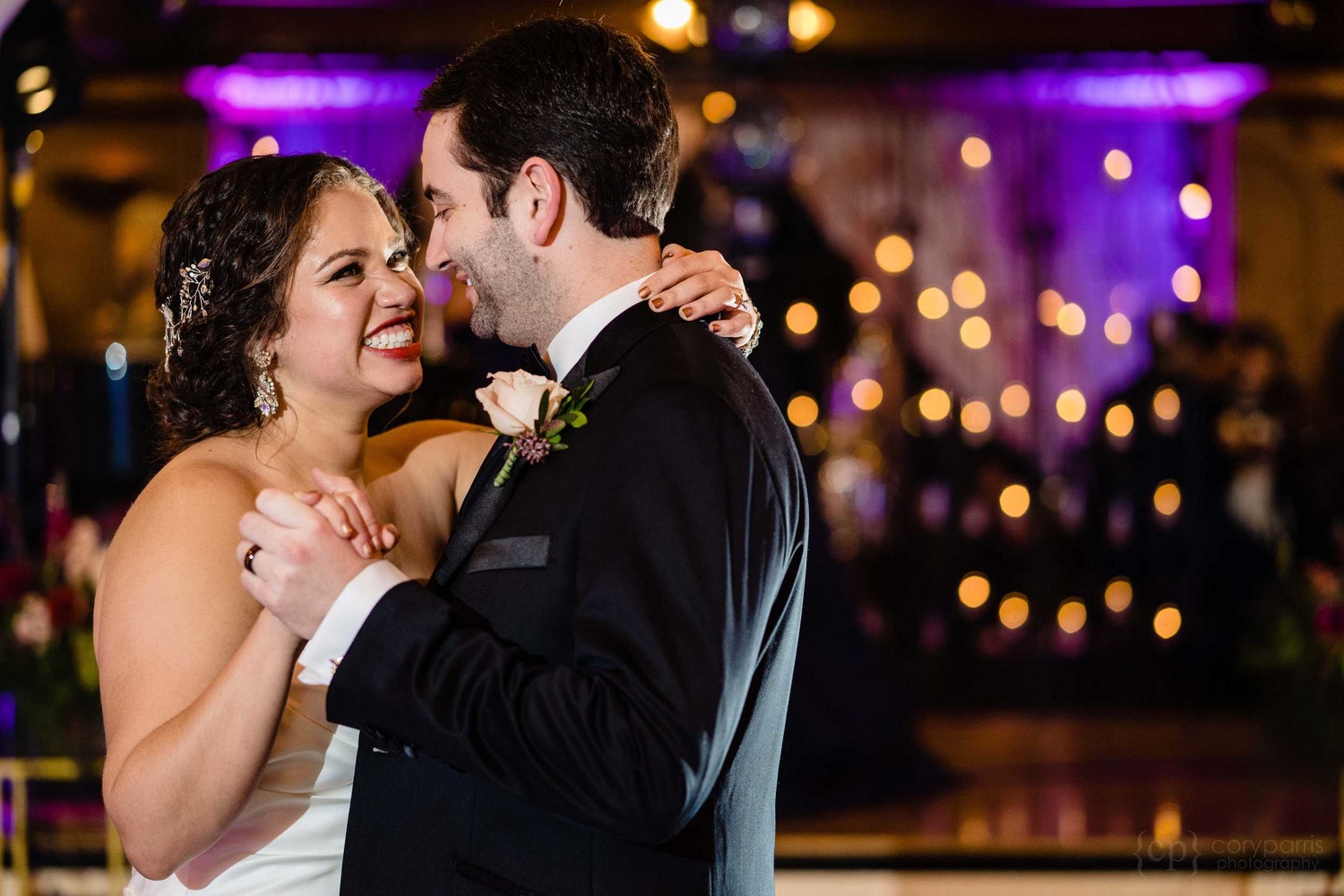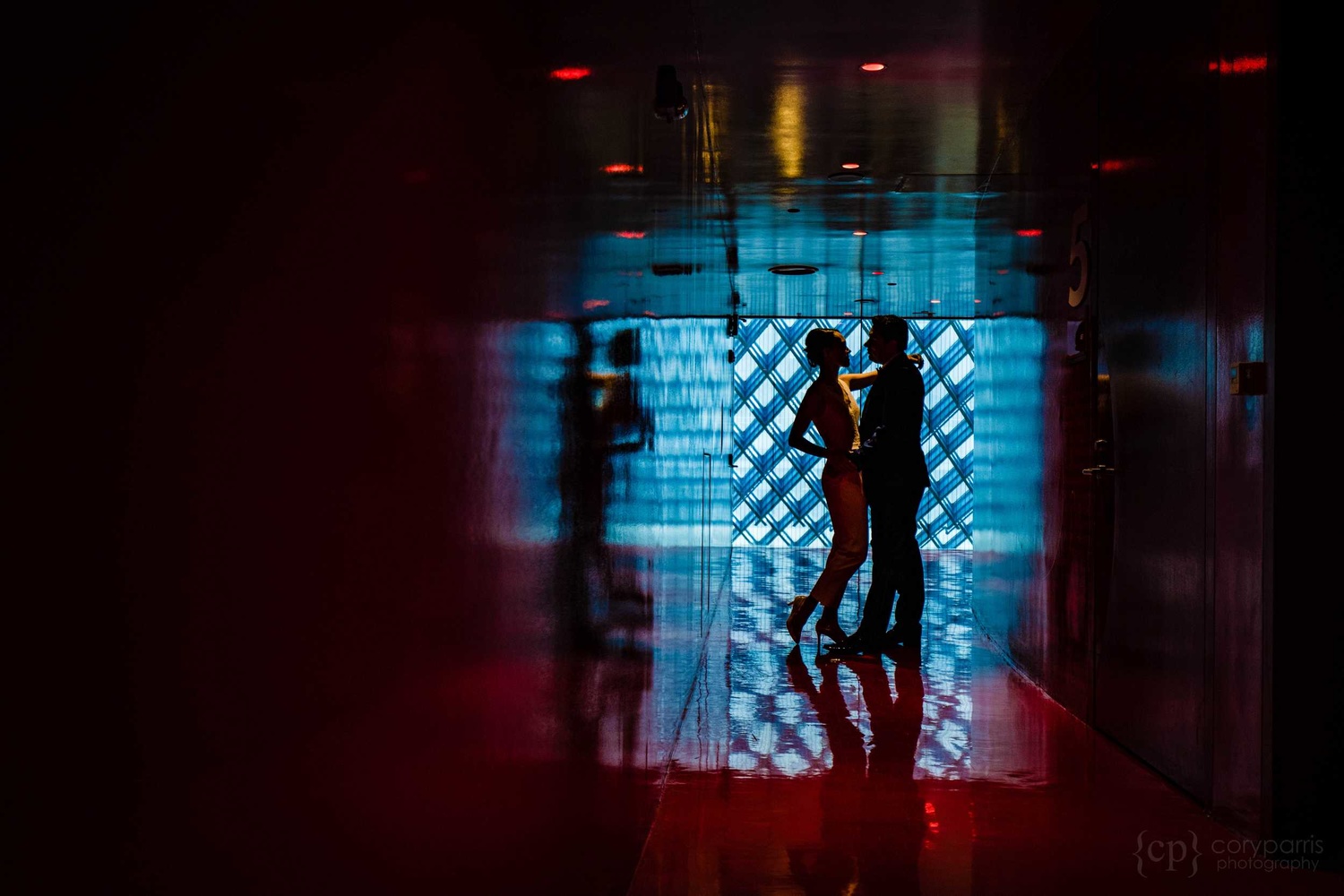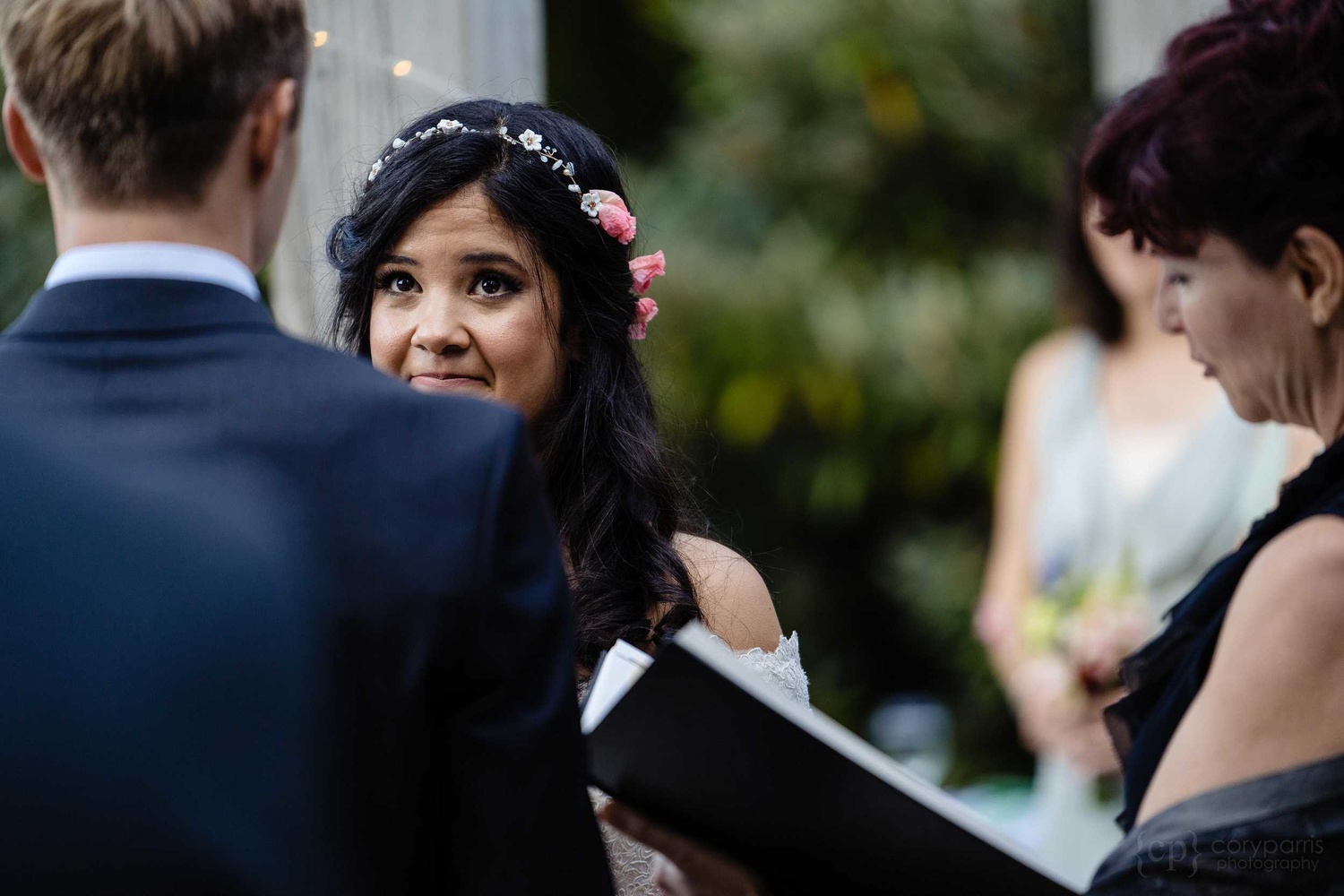A lot of new photographers view weddings as an easy way to break into professional photography while making a lot of money with minimal time, effort, and gear. As a professional wedding and portrait photographer, I can tell you part of that is true.
However, there are some things you should have before you tackle a wedding. The first is an understanding of what you are actually photographing, but a lot of people start to ignore me when I talk about the five types of photography you need to do at a wedding and perk up when I talk about gear. So, let’s talk about gear without all the judgment and ridicule this sort of question would get you on any sort of Facebook Group or forum.

Wedding couple photographed on the Seattle waterfront with the city behind them. A flash with a CTO gel is behind them to create the separation from the wall. Sony a7 II with 16-35mm lens. 1/30 s, f/4, ISO 3,200.
What gear do you need to photograph a wedding? You actually don’t need a ton of gear. Before you photograph a wedding on your own, I would highly recommend that you go with a pro to at least one event. For that learning experience, just take one camera with a 50mm or equivalent. Mostly, watch the pro do their thing, do what they ask, and stay out of the way, but also take a few images if you have some downtime.
When you shoot your own wedding for the first time, an essential thing you must have is backup gear. The event you are photographing is a one-in-a-lifetime commitment for most people. If you drop your camera and lens into a pool or over a balcony, can you still provide them with images of their wedding?
Many years ago, I was photographing a wedding with my Pentax 645 with my 135mm L/S lens. I felt a little hitch in the normally extremely smooth feel while focusing. A couple of minutes later, it wouldn’t focus back out from a close-up I had taken, so I kept turning the focus ring. Then, the front half of the lens came off in my hand while the back half was still attached to the camera. I looked at it for a second, saw that the bride and bridesmaids were looking at me, stuffed it back together, put the whole mess into my bag, and said, “That’s interesting.” Then, I grabbed my Canon 35mm system and kept shooting.
In more modern times, I was shooting with two cameras: a Canon 5D Mark III and a Canon 6D. As I was shooting the portraits on beach, the shutter on my 5D Mark III blew. It was the first time I’d ever used a camera so much that I had to replace the shutter. I just continued shooting with the 6D, I just had to change lenses more often. About 15 minutes later, as we were walking towards cars, I took an image of them walking and holding hands. Then, the shutter on the 6D broke as well. I finished shooting the reception with a digital Rebel that I had bought for just such an occasion, but never really expected to use. The moral of the story is to always have a backup and a backup for your backup.
Please note that with all my recommendations, I am assuming you are using a full frame camera. I do realize that many people, especially those starting out, are using APS-C systems. Just choose the equivalent lenses for your system.
There are really three ways to equip yourself for a wedding day. There is the standard zoom method, where you mostly use a single camera with a good 24-70mm f/2.8 zoom for most of the day and then pull out something like an 85mm or 135mm for some portraits and general flavor. Or sometimes, the 16-35mm and 70-200mm zooms get added for the holy trinity of preparedness. In this case, you would rarely use a second body, unless you are a glutton for punishment carrying around two giant weights.

Bride and groom's first dance. Two flashes used, one with a 1/2 CTO in a MagGel holder and the other in my left hand, held away from the camera with a MagBounce. a7 III with Sony 85mm f/1.8 lens. 1/125 s, f/2.2, ISO 1,600.
The second is the prime shooter with a 35mm on one body and an 85mm on the other. This requires carrying two bodies but allows for the use of some amazing lenses with jaw-dropping bokeh. Many of the wedding photographers I admire most shoot this way.
The third way, or prime shooter version two, is the way I work. That is to have two full frame bodies strapped to me. One has a 25mm and the other a 55mm when I walk into pretty much every shooting situation. Each of these is slightly off from the 24mm and 50mm that would be considered the norm. I also have an 85mm in my belt pack. I could and have photographed an entire wedding using just this and all available light. However, I also have a 16-35mm and a 70-200mm with a 1.4 extender as well as some extension tubes with me just in case I need it, and I quite often use them. I also bring quite a bit of flash equipment.
Now, let’s address lighting. With the new cameras that are available, it is entirely possible to photograph only using whatever light there is in a venue, which is awesome. However, just because there is enough quantity of light, that does not mean there is a good quality of light. For example, the dreaded raccoon eyes from the overhead lights are quite unavoidable (and unattractive) at many wedding venues. In that case, you can use a little flash to make a huge difference. I recommend at least one flash and some concept of how to use bounce flash.

Wedding couple at the Seattle public library. I saw the color contrast between the red room and the blue light coming in off of the blue exterior window structure and all of the crazy patterns. Sony a7 III with 16-35mm lens at 35mm. 1/60 s, f/4, ISO 1,000
The Quick Version
To recap for those that thought this was too long: you need at least two bodies, three lenses, and a flash. A minimum focal length range is 24mm to 85mm, but I prefer to have at least 20mm to 200mm.
Below is the equipment I take to a wedding. As a note, I have a preference for small, light gear. I have rather small hands and a history of wrist problems, so weight in my hands is a very big factor for me, and it is reflected in my gear choices. Also, I find it more pleasurable to shoot with a smaller, lighter kit.
Bodies: Two Sony a7 IIIs, one Sony A6000 as a backup
Lenses: Sony Zeiss 16-35mm f/4, Zeiss Batis 25mm f/2, Sony Zeiss 55mm f/1.8, Sony 85mm f/1.8, Sony 70-200mm f/2.8 GM, 16-50mm kit lens, 28-70mm kit lens
Flashes: Godox AD200, three Godox V860IIs, Godox V350S
Accessories: Tripod, MagBox, MagSphere, MagGrids, MagGels, Godox triggers, batteries, SD cards, polarizing filter, swiss army knife, glasses repair kit, BlackRapid Strap, light stands, umbrellas, various clamps, Cliff bars, business cards, and miscellaneous stuff that has accumulated in my gear bags.









Might be a good idea to keep your 2nd or 3rd camera off your body, I'm sure a few of us remember the wedding photographer falling backwards into a fountain with 4 cameras strapped to him lol.
Absolutely. Backup gear stays in bag. That video has haunted me for years. Also, the one where the photographer falls into a lake. And the Russian one where the photographer and videographer of different wedding parties start brawling and smashing each others' cameras...
Sh!t happens.
Patience isn't considered gear but I'd say pack plenty. I did a wedding once. And I don't plan on doing another lol.
I had someone else photograph my first and only wedding 🤣🤣
And also have an vital item with you...a list of all the important family members that will be there...mom's, dad's, siblings, and especially grandparents.
I've probably photographed 400 weddings. I don't work from a list, and I don't really want one. Since I've never met grandma, knowing her name doesn't mean anything to me. Knowing things like Mom and Dad being divorced is helpful, but a list of names doesn't do anything for me. :)
Having done a few dozen (I'm a corporate event pro), I feel the same way. OTOH, a list can be helpful for the family member who assists you in assembling people for the group shots.
I want to know that there will be 3 grandparents there, and that I capture them sometime during the day. I don't want to have to ask that of the bride or groom on the day, they may not care. But there have been many cases where a grandparent dies a month or 6 months after the wedding, and my picture becomes very important. My list is very small, parents/siblings/grandparents...it fits on 1/2 of a 3x5 notecard.
This list is not a shot list, it is just a list to help me know the makeup of the family that will be there.
Different people shoot differently. I can absolutely see how this could be helpful, but it is not something I'm real concerned about.
"you need at least two bodies, three lenses, and a flash"
If you are going to depend on flash, YOU NEED MORE THAN ONE. Backupbackupbackup. I've had three flashes and two battery packs fail without warning at a corporate event job. Not dropped, not bumped, not abused - no discernible reason. Yeah, that's one out of...oh...hundreds of events I've photographed over 20 years, but if you work long enough, the worst WILL happen to you. Flash #4 got the job done. Flashes are arguably more prone to failure or damage than either bodies or lenses. How many flash feet have snapped off in hotshoes when bumped? A LOT.
I absolutely agree. However, you can shoot a wedding with only available light with modern cameras. That doesn't mean you should!
A good, short, sweet and to-the-point reminder for wedding wannabes. I see so many posts like, "I want to shoot weddings. What camera and lens should I buy?" The question is "What TWO bodies and FOUR lenses should I buy?"
A couple of cheap Micro Four Thirds or APS bodies with an f2.8 zoom and three modest primes trumps one expensive 35mm-format body and two pricey zooms when Murphy's Law belches. BRAAAAAAAAP! Game over.